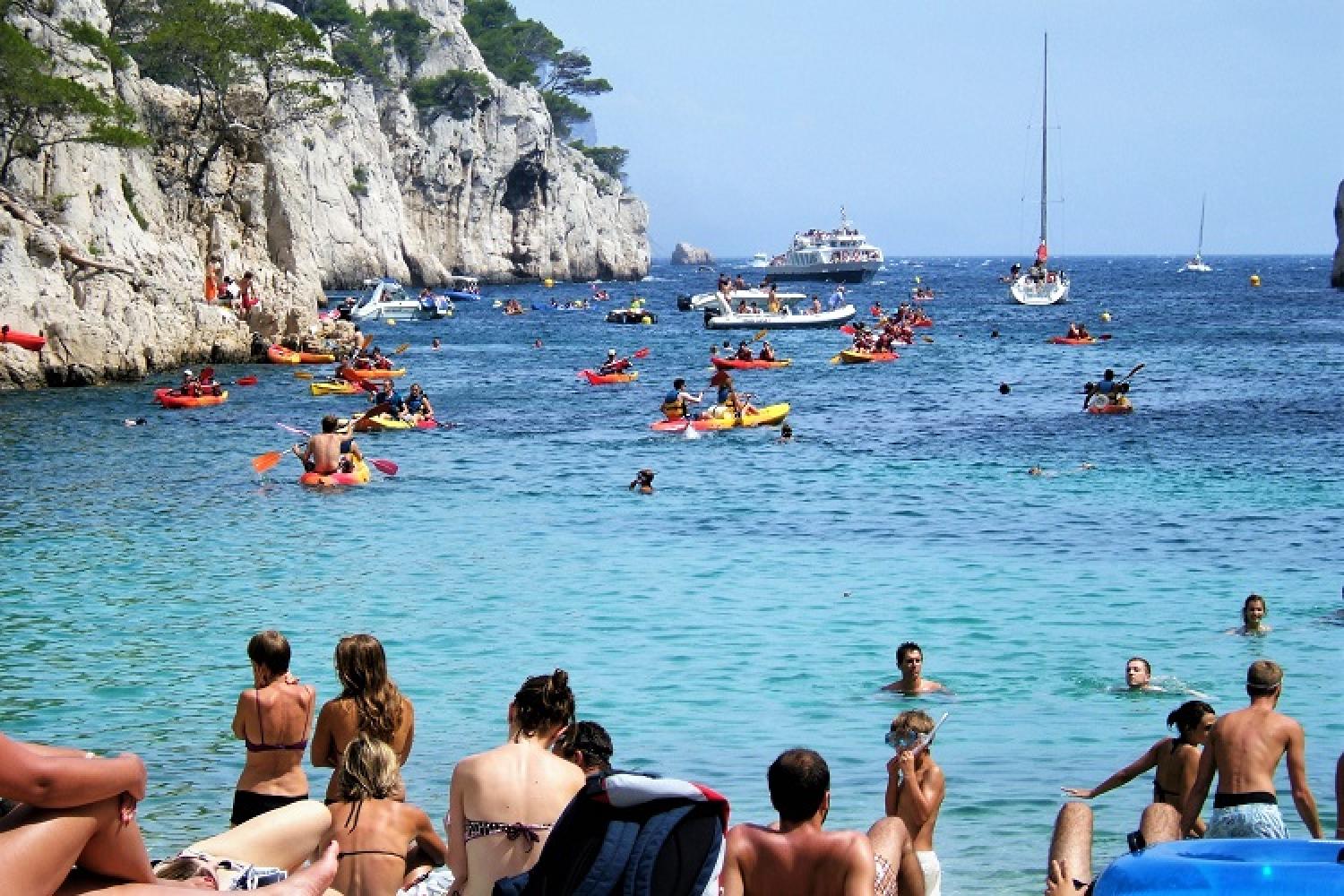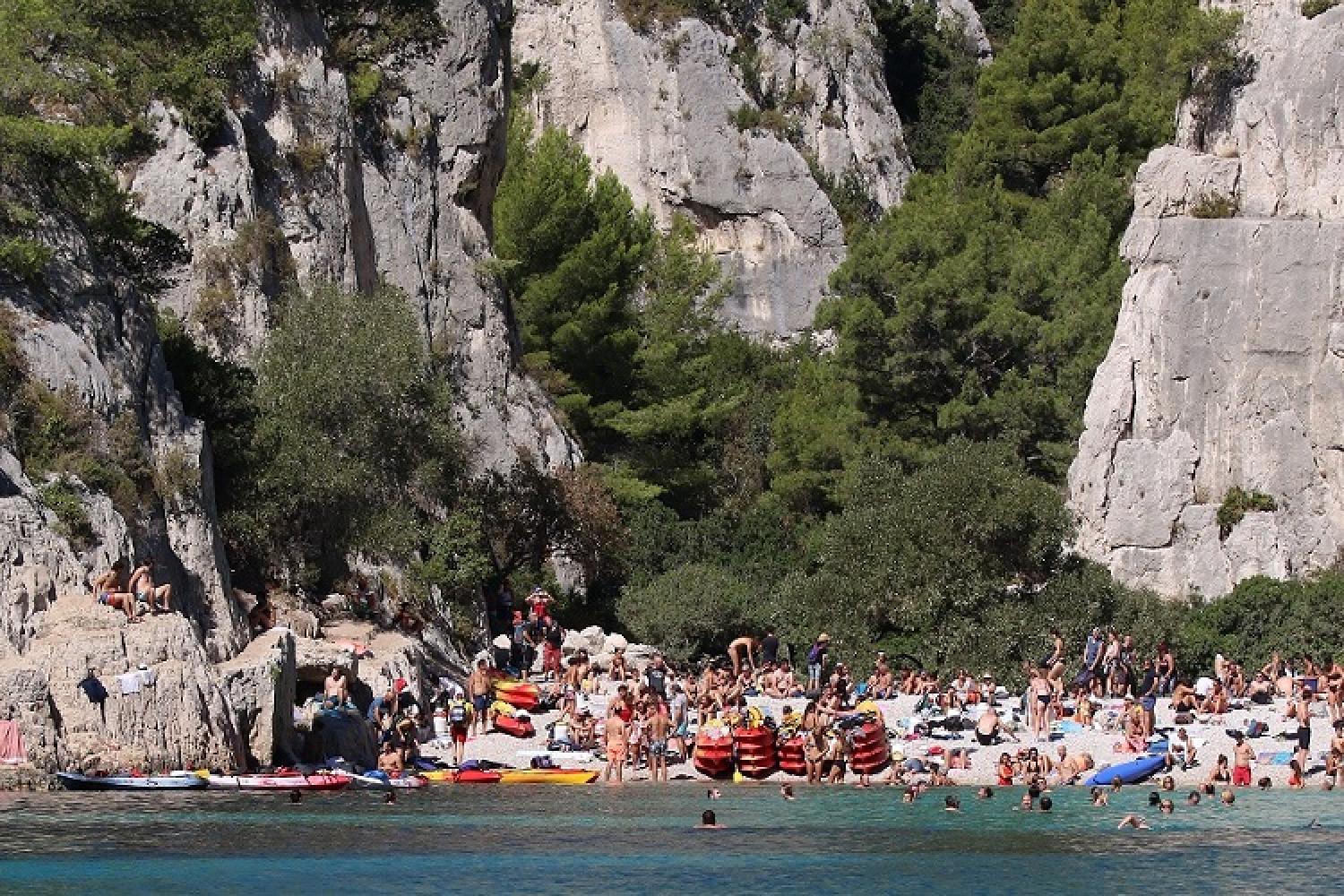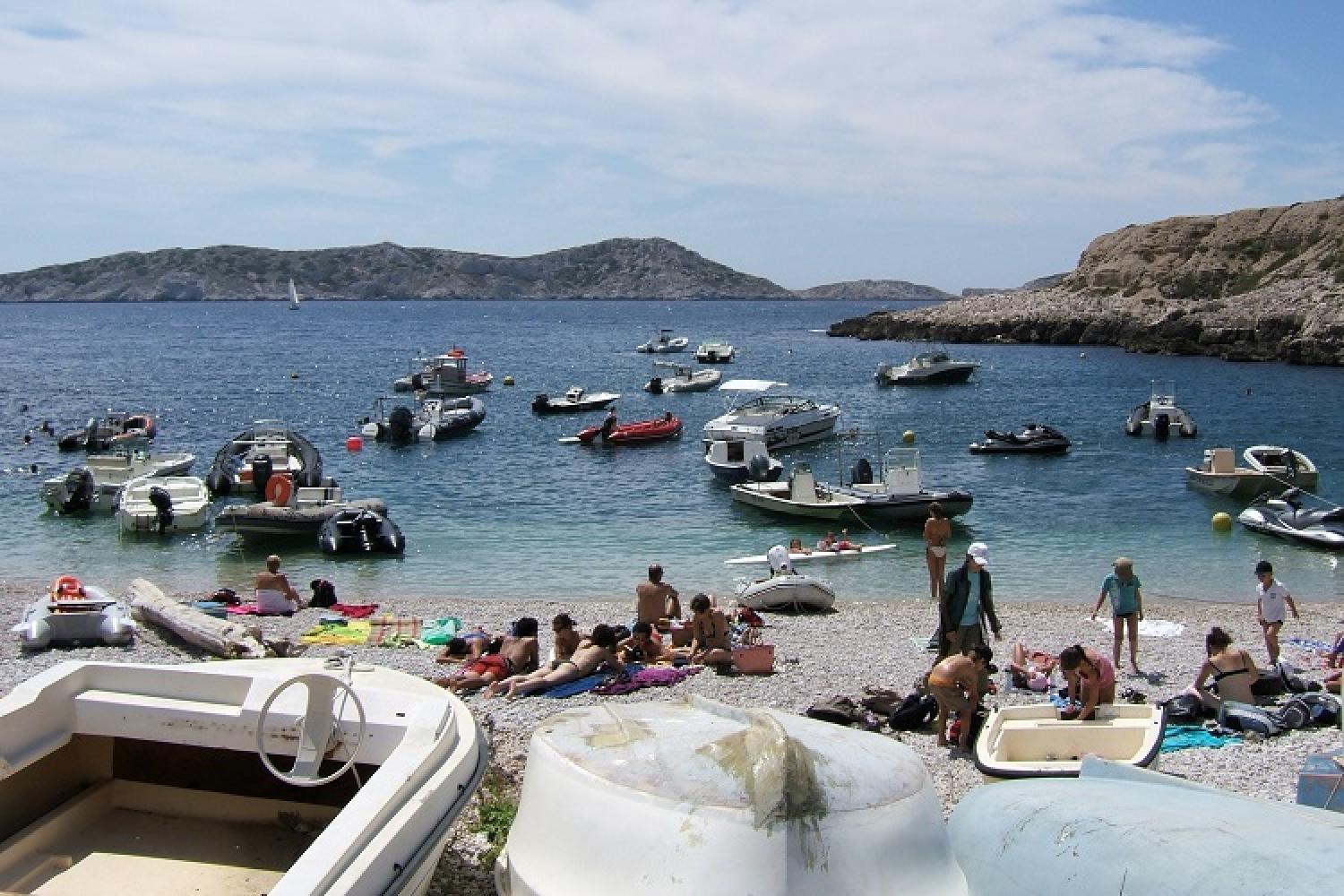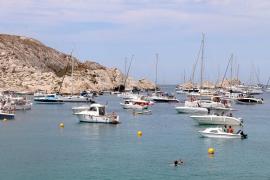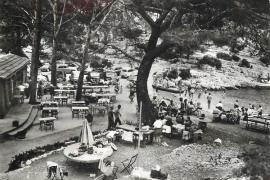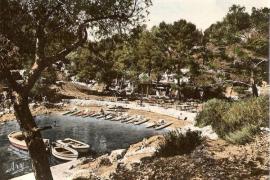Managing tourism in the Calanques
A fragile area, under pressure
Located in a peri-urban zone in the third most populated department in France, and in an area that has long been a major international tourist destination, the Calanques National Park is without doubt the most visited National Park in France. However, it is also one of the smallest and most fragile.
From tourism to overtourism
As soon as the weather is good, the Calanques are taken by storm. During peak periods (weekends in spring and in July and August in particular), some beaches, such as Sormiou and En-Vau can see up to 3,000 and 1,000 visitors respectively – although, for reasons of comfort, we know that it should not exceed a few hundred. At the Calanque de Sugiton, the problem is not only one of peace and quiet for visitors but also the major impact on the flora due to the repeated trampling and soil erosion that it generates. With around 2,000 people per day at the peak times, the sustainability of the plant cover is threatened, as is the regeneration of the pine forest, so characteristic of the charm of this Calanque.
In other places, such as at Cap Canaille, the number of climbers is rising on increasingly popular routes, while nautical activity is sometimes very dense at Cap Croisette, in certain Calanques or on certain diving sites. Problems of use can also arise between the various activities.
Better management of flows and impacts
Although this area was attractive to visitors before the creation of the National Park in 2012, the fact remains that the classification of these natural spaces attracts additional attention to them. But the problems of visitor numbers are also connected more generally to movements linked to the attractiveness of the coastline, which goes beyond the Calanques. This is why the National Park is working alongside institutional partners in the wider geographical area.
The park is also working to deepen its knowledge of the public, in order to better understand their expectations and influence their behaviour during peak periods. In addition to knowledge about visiting habits, the National Park manages visitor numbers using three main types of methods:
- improving information given to the public,
- site development and management,
- and finally, where necessary, the making of regulations.
Visiting and a sense of place: the example of the Route des Crêtes
The viewpoints on the Route des Crêtes, too easily accessible by car, do not always provide the possibility to immerse oneself in the character of the National Park. The experience, often brief, can be reduced to a momentary consumption of the space, just enough time to take two or three photos. In addition, the site is not peaceful, due to the heavy use of motorbikes in the area, a background noise which disturbs the sense of place.
Removing motorised vehicles from natural area: a long history
The National Park is continuing a process begun in the 1990s, which aims to keep motorised vehicles away from the periphery of the area (cars away from the forests and boats away from the Calanques). Paths have been laid out and signs put in place so that the public can enjoy the area, without needing to use a motor vehicle. The idea of physical effort arises: the Calanque must be earned.
On land: the example of Port-Pin and la Gardiole
At Port-Pin, until the 1970s and '80s, a "guinguette" (bar) was built (the remains of which are still visible at the bottom of the calanque) and visitors drove their cars down to the beach. The cars were then moved back to a car park created next to the Auberge de la Fontasse, which was removed in the early 2000s, and replaced by a car park at la Gardiole, which was in turn replaced by a third one, even further away, at Le Logisson.
The La Gardiole car park, removed in 2019, was crowded in fine weather and caused major traffic problems, including complicating access for fire-fighting vehicles. Today, the site is being renaturalised, encouraging the public to contemplate the route that leads to the calanque, to develop their gaze, which is often too focused on the end of the route. This discovery of the richness of nature and the landscape in the areas the visitor crosses was impossible by car. The aim is to provide another experience of the landscape, to move away from simply consuming the space, by allowing the spirit of the place and the character of the National Park to pervade. The Route de la Gardiole is symbolic of this approach.
At sea: the example of En-Vau
Until the 1990s, a boat used to operate a sea link from the Port of Cassis, taking a considerable number of people to the En-Vau beach, particularly for picnics on Sundays. Since the mid-2000s, all landings have been prohibited. Today, the National Park strictly regulates nautical activities throughout its territory. And anchoring has been banned in the Calanque d’En-Vau since 2021, in order to preserve the Neptune grass meadows.

